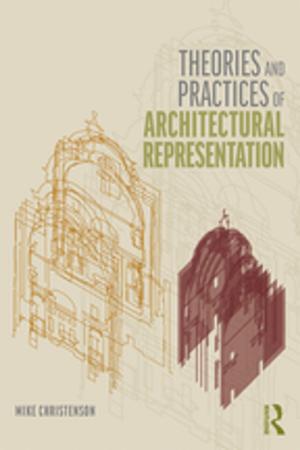Volume 6, Tome III: Kierkegaard and His German Contemporaries - Literature and Aesthetics
Nonfiction, Religion & Spirituality, Philosophy| Author: | ISBN: | 9781351874427 | |
| Publisher: | Taylor and Francis | Publication: | December 5, 2016 |
| Imprint: | Routledge | Language: | English |
| Author: | |
| ISBN: | 9781351874427 |
| Publisher: | Taylor and Francis |
| Publication: | December 5, 2016 |
| Imprint: | Routledge |
| Language: | English |
This volume explores in detail Kierkegaard's various relations to his German contemporaries. Kierkegaard read German fluently and made extensive use of the writings of German-speaking authors. It can certainly be argued that, apart from his contemporary Danish sources, the German sources were probably the most important in the development of his thought generally. The volume has been divided into three tomes reflecting Kierkegaard's main areas of interest with regard to the German-speaking sources, namely, philosophy, theology and a more loosely conceived category, which has here been designated "literature and aesthetics." This third tome is dedicated to the German literary sources that were significant for Kierkegaard; in particular the work of authors from German Classicism and Romanticism. Important forerunners for many of Kierkegaard's literary motifs and characters can be found in the German literature of the day. His use of pseudonyms and his interest in irony were both profoundly influenced by German Romanticism. This volume demonstrates the extent to which Kierkegaard's views of criticism and aesthetics were decisively shaped by the work of German authors.
This volume explores in detail Kierkegaard's various relations to his German contemporaries. Kierkegaard read German fluently and made extensive use of the writings of German-speaking authors. It can certainly be argued that, apart from his contemporary Danish sources, the German sources were probably the most important in the development of his thought generally. The volume has been divided into three tomes reflecting Kierkegaard's main areas of interest with regard to the German-speaking sources, namely, philosophy, theology and a more loosely conceived category, which has here been designated "literature and aesthetics." This third tome is dedicated to the German literary sources that were significant for Kierkegaard; in particular the work of authors from German Classicism and Romanticism. Important forerunners for many of Kierkegaard's literary motifs and characters can be found in the German literature of the day. His use of pseudonyms and his interest in irony were both profoundly influenced by German Romanticism. This volume demonstrates the extent to which Kierkegaard's views of criticism and aesthetics were decisively shaped by the work of German authors.















